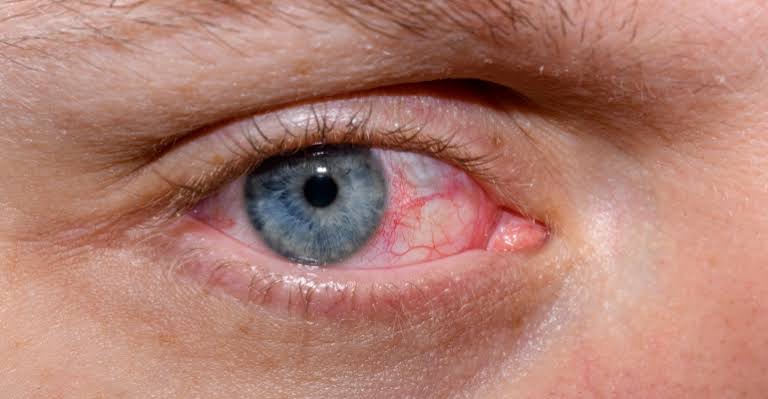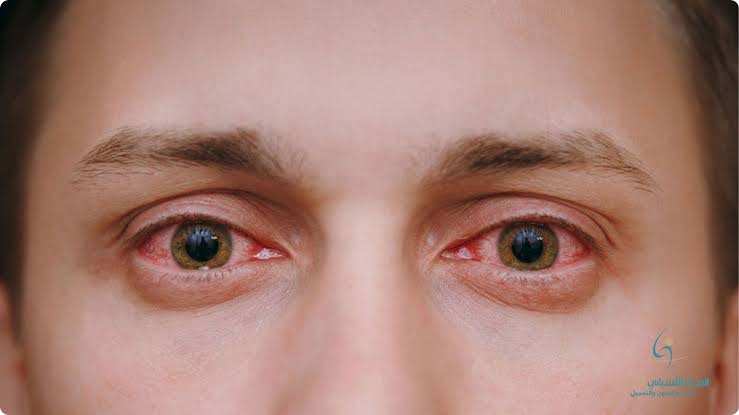Red eyes, also known as bloodshot eyes, occur when the tiny blood vessels in the white part of the eye (sclera) become inflamed or irritated. This condition can be alarming, but it’s often not serious and can be treated with simple remedies. However, in some cases, red eyes can indicate an underlying medical issue that needs attention. Here’s a look at the common causes of red eyes and how to treat them effectively.
Common Causes of Red Eyes

When your eyes don’t produce enough tears or the quality of tears is poor, the surface of the eye can become dry and irritated, leading to redness.
2. Allergies
Allergic reactions to pollen, dust, pet dander, or other environmental triggers can cause red, itchy, and watery eyes. This is due to the body’s immune response, which releases histamines that can dilate blood vessels in the eyes.
3. Conjunctivitis (Pink Eye)

Conjunctivitis is an inflammation or infection of the conjunctiva, the thin, transparent layer covering the white part of the eye. It can be viral, bacterial, or allergic and is often accompanied by symptoms like itching, discharge, and swelling.
4. Eye Strain
Prolonged use of digital screens, reading in low light, or other activities that require intense focus can lead to eye strain, which may cause redness and discomfort.
5. Contact Lenses

Improper use of contact lenses, such as wearing them for too long or not cleaning them properly, can irritate the eyes, leading to redness and, in severe cases, infections.
6.Infections and Inflammation
Conditions such as uveitis (inflammation of the uvea) or keratitis (inflammation of the cornea) can cause red eyes. These are more serious and may include symptoms like pain, blurred vision, or light sensitivity.
7.Injuries and Foreign Objects
Red eyes can result from physical trauma or foreign particles in the eye, which can cause irritation and inflammation.
8.Environmental Factors
Smoke, pollution, chlorine in swimming pools, and dry air can also irritate the eyes and make them red.
Treatment Options for Red Eyes
1.Artificial Tears

For dry eyes and mild irritation, over-the-counter artificial tears can help lubricate the eyes and provide relief.
2.Cool Compresses

Applying a clean, cold compress to the eyes can help reduce redness and soothe irritation caused by minor issues like eye strain or allergies.
3.Antihistamine Eye Drops
If red eyes are due to allergies, antihistamine eye drops can reduce the release of histamines and relieve itching and redness.
4.Avoid Contact Lens Overuse
If you wear contact lenses, ensure you’re following the recommended usage and hygiene guidelines. Taking breaks and using lubricating drops designed for contact lens users can help prevent irritation.
5.Proper Hydration

Staying hydrated is important for eye health. Drinking enough water can help maintain tear production and eye moisture.
6.Limit Screen Time

To reduce eye strain, follow the 20-20-20 rule: every 20 minutes, take a 20-second break to look at something 20 feet away. This helps relax the eye muscles and prevent redness.
7.Seek Medical Help for Infections
If you suspect an eye infection (e.g., conjunctivitis or keratitis), or if red eyes are accompanied by pain, sensitivity to light, or vision changes, consult an eye doctor immediately. Antibiotic or antiviral medications may be needed.
8.Avoid Irritants
Reducing exposure to smoke, dust, or other irritants can prevent further eye irritation. Wearing protective eyewear in harsh environments can also help.
Red eyes are common and can stem from a variety of causes, ranging from mild irritations to more serious medical conditions. Understanding the cause of your red eyes is key to choosing the right treatment. While many cases can be managed with simple home remedies, persistent or severe symptoms should be evaluated by an eye care professional to ensure proper treatment and eye health.

